In conversation with illustrator Bhavana Vipparthi
Posted by Remya Padmadas on October 23, 2017It's Inktober, and we wanted to celebrate the amazing illustrators that we get to work with here at Pratham Books' StoryWeaver. If you're on Instagram, check out cool Instagram takeovers by some of our illustrators. We wanted to explore working styles, processes and more on our blog, so we got chatting with illustrator Bhavana Vipparthi. Read on!
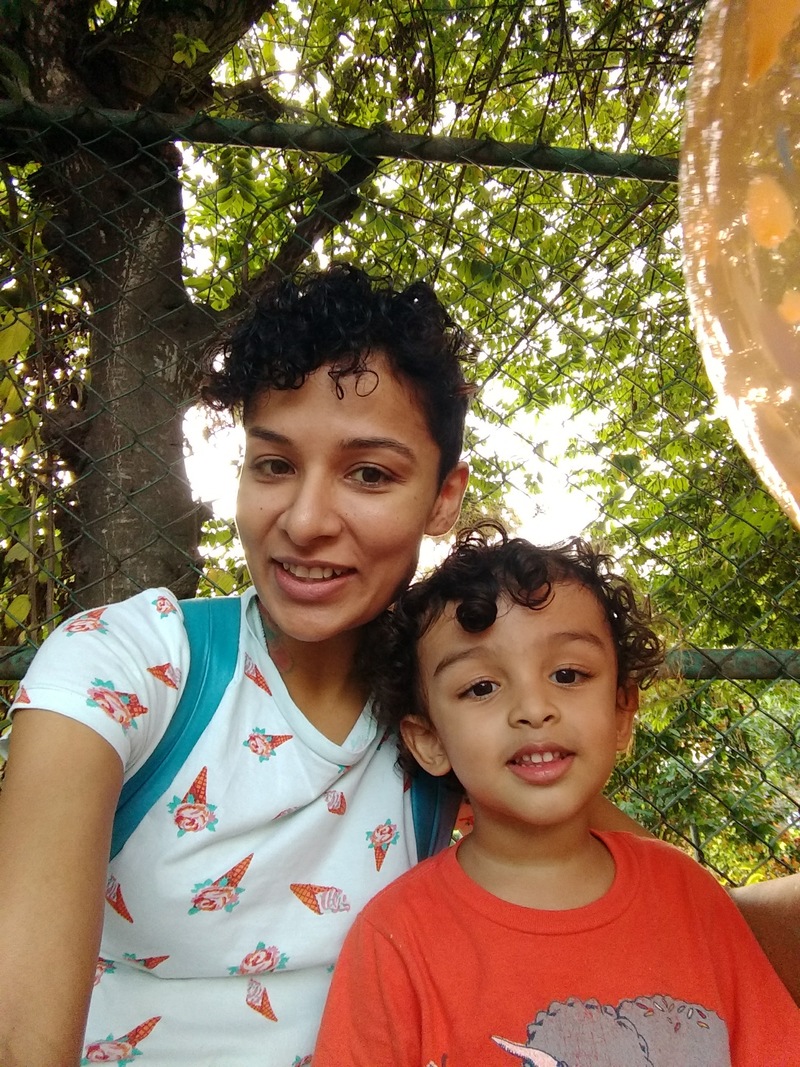
Bhavana Vyas Vipparthi, has lived and studied in Bangalore all her life. Having finished a Fine Arts course at Srishti, School of Art Design And Technology, she went on to do a masters in animation film design at NID in Ahmadabad. Her mind is now consumed by her terribly talkative two and a half year old son, a perfect dog, and a fellow animator husband. She makes up a million stories a day to stay sane. You can find their work on https://vimeo.com/
At what stage of the visualising process do you come up with the medium in which you choose to illustrate?
When I read the story, certain things pop out in terms of visual interest. In ‘A Cloud of Trash’, the big cloud of garbage hanging over Chikoo’s head was a great hook. I figured the most interesting way to show garbage isn't a drawing of garbage, but the real trash itself. The rest flowed from there.
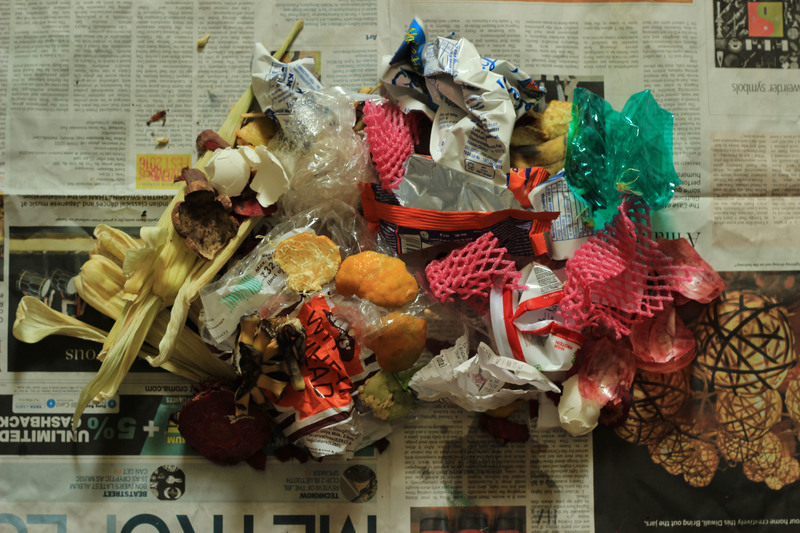
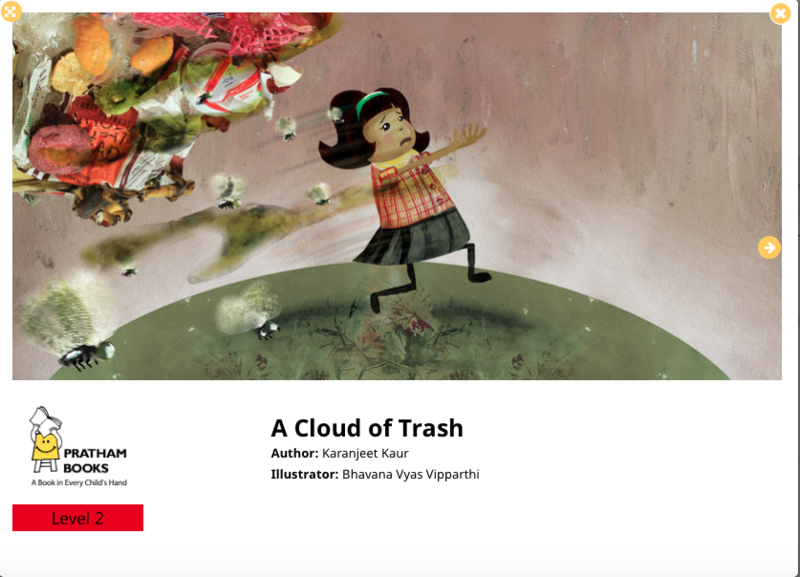
Do you invent a backstory for the character in your head?
You do tend to find a way to identify with the characters when you design them. What they might be like, what they would wear or how they would express emotions. Unknowingly people you know or bits if your own memory fill in those gaps to make the character a real person.
Who are some illustrators whose work you admire?
Dave McKean is a brilliant mixed media illustrator and comic book artist. I can pour over his pictures for hours enjoying how he has constructed the images. Emily Gravett is another wonderful artist. I really admire her lines.
What do you find exciting about working with mixed media?
I enjoy the little bits of reality that the image has. It makes for a topsy turvy world. It's interesting to me to sit with a page and wander around the image and see different things. I find mixed media allows me that space to play with different textures and perspectives to generate interest.
What was the first character you remember making up in your head?
This is very hard. I really can't remember the very first. They all live with me on a daily basis. When you have a kid, everything is a character. The cardboard tube is a rocket that talks back. The plastic zebra and elephant are having a chat by the river...
At what point in your life did you know that illustrating is what you wanted to do?
I was very lucky to have had a wonderful teacher at Srishti. Soumitro Sarkar, was an illustrator and a fantastic teacher. I think he was the reason I understood that the kind or art that I like to make and all the stories I have in my head were welcome in the land of illustration.
Could you tell us a little about what you're working on now?
Currently I am working on illustrating a book, about an absent minded Ajja ,who is turning the house upside down in search of his umbrella:)
Do you have any advice for illustrators who are just starting out?
Find something about the story that you connect with. A place, a character or even an emotion that you can identify with. Then take that and play. I always start my ideas from there.
You can read 'A Cloud of Trash' in 15 languages on StoryWeaver.
Be the first to comment.A StoryWeaver workshop in your city!
Posted by Vineetha Menon on May 29, 2019With our mission of ‘a book in every child’s hand’, it is our constant endeavour to take more books and stories to more children. With StoryWeaver, our open-source, multilingual digital repository of children’s stories, access to good quality reading material has become much easier. Children and educators can read 14000+ stories in over 180 languages!
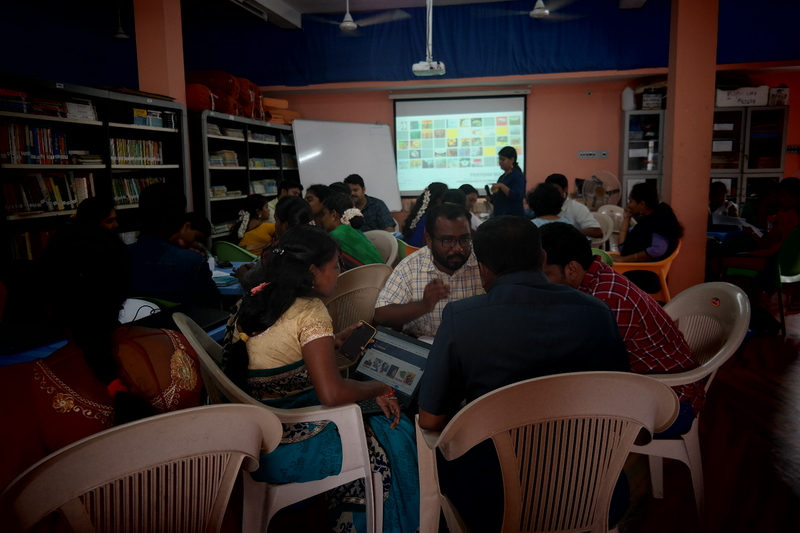
One of the ways in which we engage directly with organisations and educators is by conducting StoryWeaver workshops with them. The day-long session focuses on why reading is important and explores the platform in detail. Participants also get dedicated time to try the platform on their own and engage with the Pratham Books team and network with other participants. The workshops participation is free of cost, but on a first come first serve basis.
We are planning two workshops in June & July. One is Mangalore and the other one in Raipur. If you are an organisation that works with under-served children wanting to bring more stories to them and engage with StoryWeaver, please fill the form here and we’ll contact you with further details.
Interested organisations based in and around Mangalore, please sign up here. Interested organisations based in and around Raipur , please sign up here.
If you want to know more about our efforts to engage with organisations or have anything else to say, please write to us at [email protected].
Be the first to comment.StoryWeaver in Action: My First Workshop
Posted by Remya Padmadas on October 15, 2018
Bhavini Pant, Assistant Editor, StoryWeaver attended and helped conduct her first ever StoryWeaver workshop last month in Bengaluru. She shares her experience in this blog post.
Working behind the scenes of StoryWeaver can be unpredictable. On some days, things seem calm and almost monotonous. On other days, I can't believe I'm working for a tech platform given how things decide to work (or stop working) quite randomly. In between the zeros and ones, I'm certain there's a cheeky monster laughing at us when we splutter, "But.. but.. this isn't supposed to be happening!"
Unpredictable as the days may be, it can become a little routine spending time in front of a screen. When I was invited for my first StoryWeaver workshop on 6 September, I was happy for the chance to step out of office and meet new faces. This workshop was one of the many conducted by our Partnerships team to introduce StoryWeaver to educators. New recruits to StoryWeaver are also encouraged to participate to fully understand the platform and how new users experience StoryWeaver.
The venue was a large, but cosy space on the terrace of a building in Koramangala, Bengaluru. People from a wide variety of organisations had signed up for the workshop. They represented different aspects of education, technology and child welfare which made for an interesting assortment of participants. There was ChildFund India (who work with children as young as 1 year olds), Meghshala (who empower teachers to go beyond textbooks and provide quality education), eVidyaloka Trust (who empower rural India through quality education using technology), Gubbachi Learning Community (who work on bridge learning programmes for school drop-outs) and Caring With Colour (who work on arts integration and activity-based learning). Some participants had travelled all the way from Mysore (Pratham, Learning Spaces) and Hyderabad (Aga Khan Foundation) for the workshop!
As participants started trickling in, some confident, some a little nervous I was reminded of my previous job where I would take workshops with educators on a fiction-reading program for school children. Teachers are almost unthinkingly expected to take the lead in a classroom. When I was teaching, I often missed the luxury of learning that comes with being a student. I imagine that some of the participants felt the same, for they welcomed the chance to be learners again: asking questions, developing and sharing their insights, putting pieces together.

Initially when one of the facilitators began demonstrating StoryWeaver by telling us a story from the platform, my attention was drawn to her narration. And then, quite by chance, my gaze slid to the participants. I was thrilled to see them smiling along with the story. My heart smiled with them. It felt wonderfully uplifting to see participants' eyes light up, to see them laugh quietly during the funny bits. When a Read-Along story was demonstrated, lots of participants shared different ways they could anticipate educators using the feature. It was heartening to see educators explaining cross-disciplinary uses for Read-Along stories – that while the storyline could be used to introduce say, a mathematical concept to children, the narration and highlighted words could be used to demonstrate pronunciation, grammar and other language concepts.
Once the participants began working on their own stories, the space was buzzing with questions, suggestions and observations. Translated stories, in particular invited much discussion among the teachers. They debated the choice of words and their reasons for why a certain word should or should not be used. Eventually, some participants chose to translate the same story on their own as part of the exercise on creating a story!
The workshop was a good chance for me to cleanse my content manager palate. While we’re constantly working on increasing content on StoryWeaver for our users, I was able to see how a person new to StoryWeaver could be overwhelmed at the prospect of browsing through 9,000+ stories. We’re continually trying to make the experience of searching for stories faster and easier. Apart from filters, the teachers were also introduced to Lists - a section on StoryWeaver which has curated sets of stories based on areas which are relevant both in the classroom and outside it. Bright and colourful Category Cards (which appear when you scroll down the home page a little) also help organise all stories on the platform. Since the categories reflected subjects (eg. History & Culture) as well as broad themes (eg. Humour), we could see educators nodding and smiling satisfactorily.
In the end, when participants were filled with glee and pride to see their published story showing up on ‘New Arrivals’, we shared their thrill of creating something original.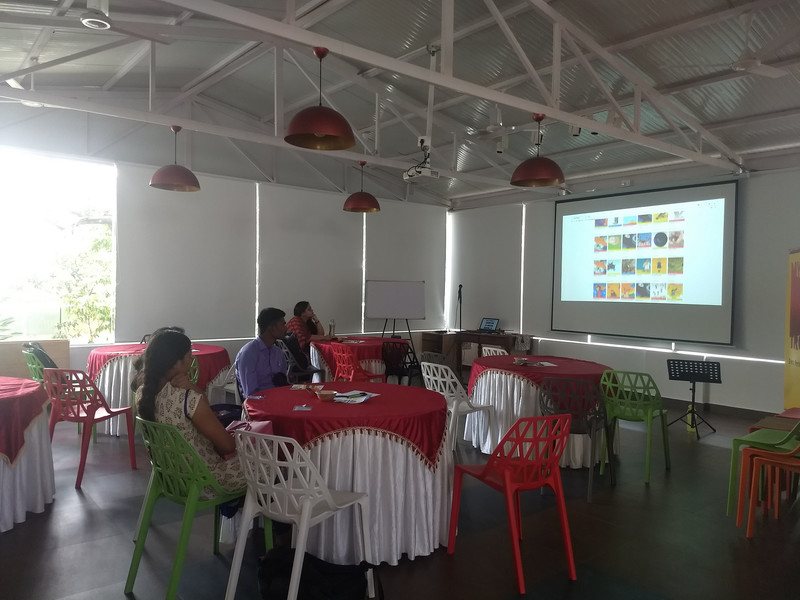
As a former teacher, it was deeply moving for me to see educators taking control of the kind of material they would like to use and create for their children. Teachers are often expected to effect far-reaching changes in children but are not supported or encouraged as much as they need to be. Hopefully, StoryWeaver can be a space that addresses this imbalance while being easy and fun to use.
Be the first to comment.